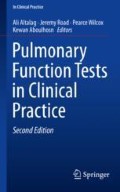Abstract
This chapter reviews the fundamentals in acid-base interpretation and the differential diagnosis for each acid-base pattern. We also discuss oxygen transfer physiology and pathophysiology with a final case based illustration of the topic.
Access this chapter
Tax calculation will be finalised at checkout
Purchases are for personal use only
References
Bear RA, Dyck RF. Clinical approach to the diagnosis of acid-base disorders. Can Med Assoc J. 1979;120:173–82.
Kassirer J, Bleich H. Rapid estimation of plasma carbon dioxide tension from pH and total carbon dioxide content. N Engl J Med. 1965;272:1067.
Emmett M, Narins RG. Clinical use of the anion gap. Medicine (Baltimore). 1977;56:38–54.
Lennon E, Lemann JJ. Defense of hydrogen ion concentration in chronic metabolic acidosis. A new evaluation of an old approach. Ann Intern Med. 1966;65:265.
Narins RG, Emmett M. Simple and mixed acid-base disorders: a practical approach. Medicine (Baltimore). 1980;59:161–87.
Albert MS, Dell RB, Winters RW. Quantitative displacement of acid-base equilibrium in metabolic acidosis. Ann Intern Med. 1967;66:312–22.
Dubose TD. Acid–base disorders. In: Brenner BM, editor. Brenner and Rector’s The Kidney. 6th ed. Philadelphia, PA: WB Saunders; 2000. p. 925–97.
Batlle DC, Hizon M, Cohen E, Gutterman C, Gupta R. The use of the urinary anion gap in the diagnosis of hyperchloremic metabolic acidosis. N Engl J Med. 1988;318:594–9.
Oliva P. Severe alveolar hypoventilation in a patient with metabolic alkalosis. Am J Med. 1972;52:817.
Cuomo A, Lifshitz M, Brasch R, Al E. Marked hypercapnia secondary to severe metabolic alkalosis. Ann Intern Med. 1972;177:405.
Javaheri S, Kazemi H. Metabolic alkalosis and hypoventilation in humans. Am Rev Respir Dis. 1987;136:1011–6.
Fulop M. Hypercapnia in metabolic alkalosis. NY State J Med. 1976;76:19.
de Strihou VY, Frans A. The respiratory response to chronic metabolic alkalosis and acidosis in disease. Clin Sci Mol Med. 1973;45:439–48.
NCJ B, Cohen JJ, Schwartz WB. Carbon dioxide titration curve of normal man. Effect of increasing degrees of acute hypercapnia on acid-base equilibrium. N Engl J Med. 1965;272:6–12.
Schwartz WB, NCJ B, Cohen JJ. The response of extracellular hydrogen ion concentration to graded degrees of chronic hypercapnia: the physiologic limits of the defense of pH. J Clin Invest. 1965;44:291–301.
Arbus GS, Herbert LA, Levesque PR, Etsten BE, Schwartz WB. Characterization and clinical application of the “significance band” for acute respiratory alkalosis. N Engl J Med. 1969;280:117–23.
Gennari FJ, Goldstein MB, Schwartz WB. The nature of the renal adaptation to chronic hypocapnia. J Clin Invest. 1972;51:1722–30.
Weil JV. Ventilatory control at high altitude. In: Fishman AP, editor. Handbook of physiology. Section 3: the respiratory system. Bethesda, MD: American Physiological Society; 1986. p. 703–27.
Goldberg M, Green SB, Moss ML, et al. Computer-based instruction and diagnosis of acid-base disorders: a systematic approach. JAMA. 1973;223:266–75.
Mellemgaard K. The alveolar-arterial oxygen difference: its size and components in normal man. Acta Physiol Scand. 1966;67:10–20.
West JB. Respiratory physiology: the essentials. Philadelphia, PA: Lippincott Williams & Wilkins; 2012.
Author information
Authors and Affiliations
Corresponding author
Editor information
Editors and Affiliations
Rights and permissions
Copyright information
© 2019 Springer International Publishing AG, part of Springer Nature
About this chapter
Cite this chapter
Altalag, A., Road, J., Wilcox, P., Aboulhosn, K. (2019). Arterial Blood Gas (ABG) Interpretation. In: Altalag, A., Road, J., Wilcox, P., Aboulhosn, K. (eds) Pulmonary Function Tests in Clinical Practice. In Clinical Practice. Springer, Cham. https://doi.org/10.1007/978-3-319-93650-5_8
Download citation
DOI: https://doi.org/10.1007/978-3-319-93650-5_8
Published:
Publisher Name: Springer, Cham
Print ISBN: 978-3-319-93649-9
Online ISBN: 978-3-319-93650-5
eBook Packages: MedicineMedicine (R0)

